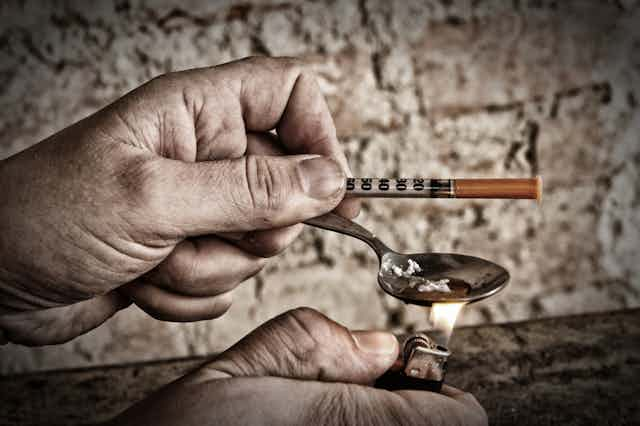The latest drug-treatment figures from Public Health England show that the UK’s current approach is failing to reduce drug-related deaths, which are now at an all-time high.
We know that the prescription of methadone, buprenorphine or heroin to people who have problems with opiates can help to reduce deaths. But we also know that most of these deaths happen to people who are not in treatment. We need to provide support for the wide range of problems these people have, including homelessness, mental health problems, long-term unemployment, smoking and heavy alcohol use.
The solution, as recommended by the government’s Advisory Council on the Misuse of Drugs, is to invest in opiate-substitution therapy, of optimal dosage and duration, and to protect more people by providing heroin-assisted treatment, safe drug consumption clinics and outreach to get people into treatment.
The Conservative government’s recent drug strategy fails to do this. Instead of increasing, the number of people in treatment is actually falling. And funding is falling even faster, meaning that hard-pressed treatment agencies cannot provide more effective, integrated services.

Cuts to drug treatment budgets are extremely shortsighted. Not only do effective services save lives, they reduce the spread of blood-borne viruses, including HIV. About half of people who inject drugs have hepatitis C. Getting them into treatment is an essential part of plans to eliminate the disease .
Leaving aside the benefits to health, drug treatment pays for itself in the savings it produces by reducing crime.
Today’s report, showing a 23% rise in treatment presentations for crack cocaine use, seems to follow an increase in the popularity of the drug observed since 2010-11. The Home Office reports today that crack cocaine seizures are at their highest level since 2008. Public Health England has said in response to the rise:
The takeaway messages from today’s data are that the increases in crack users needing and seeking help show how vital it is for a treatment system able to reach out and respond to increased demand and changing problems.
Smoking rates among people in drug treatment are nearly four times the rate for the general population. This makes it even more important that services are funded to provide more holistic services, including smoking cessation, that people with drug problems need. However, this will require a cultural change in the treatment workforce that often view smoking as a less serious drug problem.
Time to update the approach
We have a treatment system that was created last decade, primarily to meet the needs of heroin users in their 20s and 30s. The new report shows that today’s needs are different. They are about increasing health problems among a prematurely ageing cohort of heroin and alcohol users, plus a younger group of people using crack cocaine. Services need to adapt to meet the needs of a more varied group of people and to attract more of them into treatment.
Three things every patient responds to are compassion, empathy and having the time to share their story. These basic components are difficult to provide in services that are being reorganised every three years and with significant cuts to their budgets.

